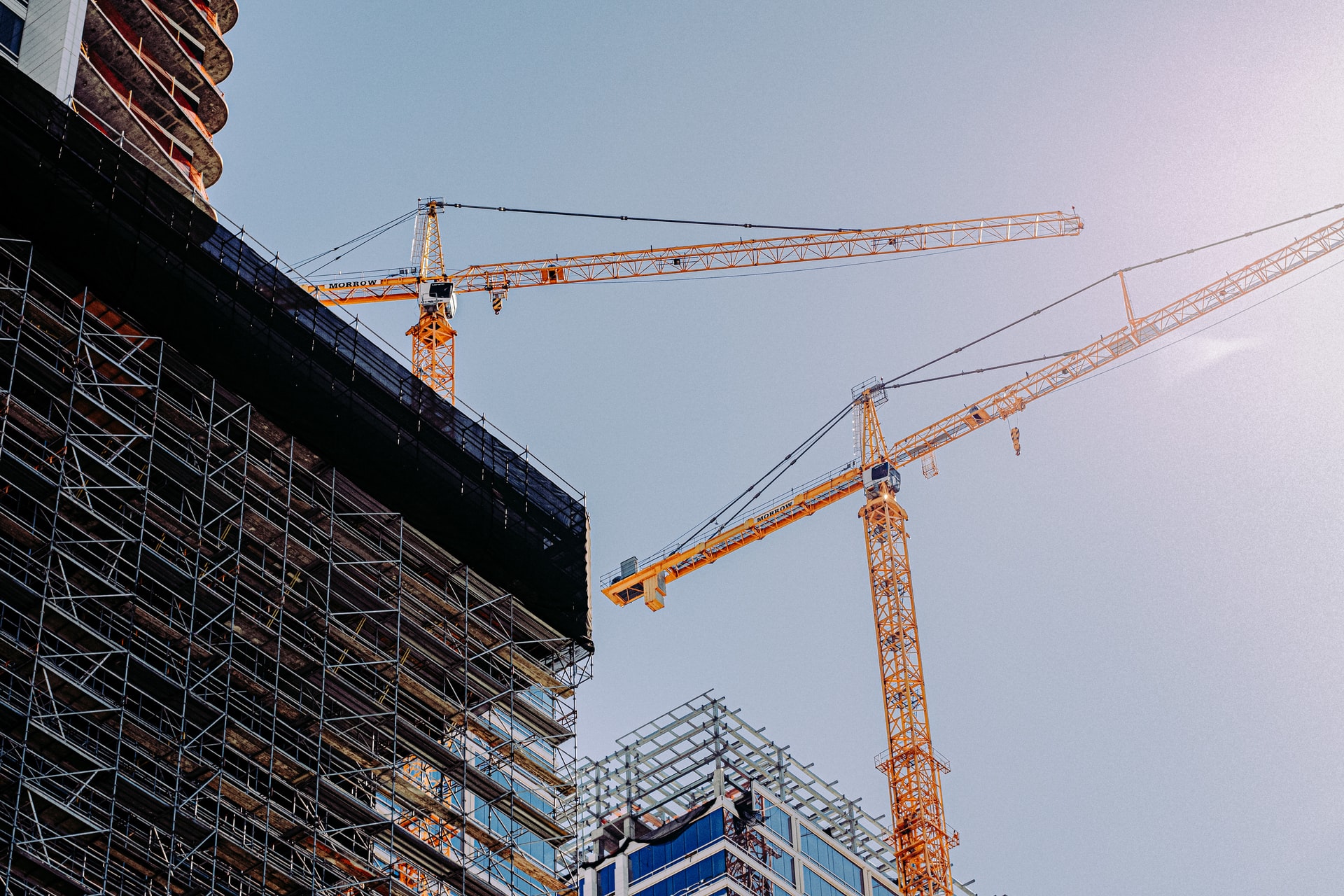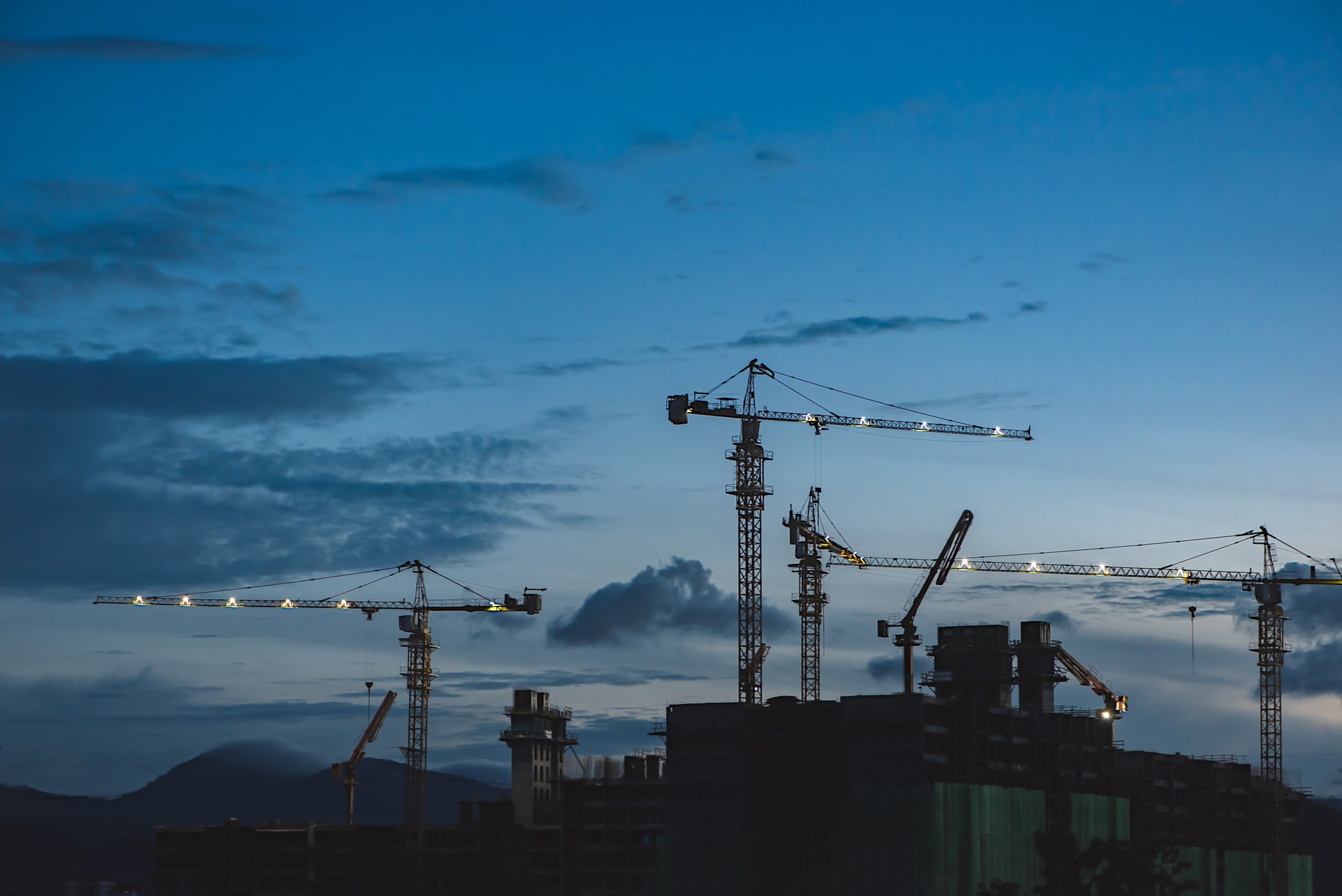In 2022, Here Are the Top Ten Construction Industry Trends To Keep an Eye On
2022 will be a year of reemergence and expansion in the construction industry, following a volatile era of revising projections and altering expectations. Rising construction prices and labor shortages continue to put pressure on the industry to come up with innovative new solutions, while tighter rules restrict the margin for error and waste.
The COVID-19 epidemic has altered the way the construction sector does business, from project scheduling and closure to employing personnel and meeting with clients, since last year. The pandemic’s aftermath will have an impact on numerous industry developments in the future. Construction sites are changing as new technology improves the ability to win projects and increases profit margins. The roles of industry professionals and frontline workers are shifting as a result of trends and movements.
Harnessing these construction trends will prove valuable for any construction firm as the industry grows more competitive and the market transforms. To stay competitive, read on for the top ten construction sector trends, νομιμοποιηση αυθαιρετων, to watch in 2022.
1. Personal Protection Equipment
The COVID-19 epidemic has had a significant impact on the building sector, with improved state rules emphasizing cleanliness and tight safety standards already in place. This could involve increased union influence in projects, thereby increasing project costs and timelines.
Machines capable of identifying typical safety hazards and eradicating those threats one at a time are also on the rise in the sector. Work boots that link to Wi-Fi and alert others if person falls are among the latest wearable inventions to hit the working site. Tasked robots erect scaffolding or lay bricks autonomously, while material-moving “mules” deliver heavy or dangerous items. Headsets can even help workers stay in tune with their surroundings while actively reducing noise pollution.
We are already witnessing robots that can completely replace specific human workers, in addition to worker gear. Rather of “replacing” humans, these robots are transforming the jobs that humans do — in most cases, they’re supplementing human decision-making (such as understanding and translating data discoveries into actionable insights) and freeing up space for higher-level jobs.
Environmental sensors that detect noise, heat, and wind at construction sites provide warnings to evacuate construction workers and move costly construction equipment in the event of an emergency or natural disaster, and reliance on 3D printing continues to rise, resulting in decreased transportation risks.
 2. Technology that is efficient
2. Technology that is efficient
This year, technology in construction — specifically, improvements that might improve productivity — will most certainly be the major difference for builders and developers. The pandemic of COVID-19 has also resulted in a greater reliance on construction technologies. Through 2022 and beyond, there are a few categories of technology that will only grow in popularity:
Smart Contracts are a type of contract that is used to
Blockchain technology, according to experts, is boosting relationships in the construction sector since it’s a key component in creating a more secure and efficient workflow that benefits all parties involved.
Smart contracts provide a shared business framework for all project participants, allowing them to buy, track, and pay for services. Firms can employ smart contacts as an all-in-one tracking system where rules and deadlines are specified and the blockchain enforces them, rather than collecting contracts and tracking deliverables from different parties. Faster closeouts, higher security, improved project tracking, and an automated supply chain are all advantages of this technology.
Drones for Construction
Drones are still one of the fastest-growing trends in the construction business, with utilization up 239 percent year over year. Aerial photography for real estate and commercial purposes is only one application of the technology.
Drones are already being utilized to quickly map big areas over great distances, resulting in valuable aerial heat maps and thermal photos. The latest drone software gives real-time, actionable data that can be used to make quick decisions, expediting the entire construction process even further.
Construction’s largest liabilities are still personal safety and equipment loss. Drones can undertake jobs that require scaling supertall structures in place of human personnel to avoid damage. Drones can be used as on-site security equipment to cut labor expenses and reduce the danger of theft, keeping projects on track and reducing delays.
Monitoring equipment depreciation and using AI to arrange moving construction equipment are two more sophisticated potential uses.
Virtual and Augmented Reality (AR)
By the end of the decade, the worldwide AR market is estimated to be worth more than $1.2 trillion, up from $37 billion in 2019. AR means effective project staging and making preconstruction projects tangible for buyers and tenants on the client side.
AR makes it easier for builders and developers to employ wearable technology and 360-degree video to:
• 3D projection of future projects in relation to their surroundings
• Buildings are being measured automatically
• Architectural and structural modifications can be quickly and affordably simulated.
• Hazard simulations and safety training
Modeling of Building Information (BIM)
Industry leaders are using building information modeling technology to help them stand out with increased efficiency. Building Information Modeling (BIM) allows users to create computer visualizations of buildings and utilities. The ease with which these models may be managed and data shared can lead to better prefabrication of parts, resulting in on-time and correct completion. It’s “an sophisticated 3D model-based technique to assist professionals manage buildings and infrastructure,” according to Autodesk.
3. The Demand for Laborers Is Growing
A significant increase in labor demand has been one of the most visible building trends in recent years. Quality labor is costly and difficult to come by, while robots do help to fill up the gaps.
Despite the best efforts of these robots, more educated employees will be required to manage and evaluate the data generated by new technology. Women are moving forward to fill more competitive roles, which is a good thing. Women make up only 10.9 percent of construction industry jobs, according to the Bureau of Labor Statistics, and industry hiring trends show a 94 percent increase in female-owned construction firms from 2007 to 2018; additionally, 30 percent of construction companies promoted a woman to a senior position in 2018.
In recruiting efforts, the sector is also focusing on Generation Z, those born between 1995 and 2010. Negative opinions of trade schools have hampered efforts to acquire new construction talent in the past. The COVID-19 pandemic caused a shift in attitudes toward alternative education options, resulting in an increase in positive attitudes toward trade school, allowing construction companies to highlight the industry’s career growth potential and abundance of opportunities to experiment with new technologies.
4. Mobile Access and Remote Worksites
In the construction business, mobile applications enable unprecedented jobsite access, including real-time inspections, on-site accountability, and precise measurements obtained with a cell phone camera.
Teams must continue to collaborate despite without having physical access to products, venues, or even other coworkers, according to COVID-19. AECOM created technology that allows public approval hearings to be held electronically, allowing public projects to move forward without the need for in-person meetings. AirMeasure, a measurement helper, and Infotycoon, an asset management program, are two more smartphone apps on the market. Those who do not have total mobile connectivity will be at a competitive disadvantage in the future in terms of productivity and sales.
5. Material Costs are Increasing
The Producer Price Index for construction items climbed by 17 percent year over year in 2021, according to the US Bureau of Labor Statistics. Rising borrowing rates are likely to exacerbate all forms of costs, putting more strain on the overall construction industry. Drones, augmented reality, and building information modeling (BIM) will be crucial in maintaining project volume and combating cost pressure.
Innovative living materials and technologies may raise expenses even higher, but they will eventually save users money in the long run. These are some of the cutting-edge materials:
• Concrete that heals itself
• Graphene in three dimensions
• Aluminum that is transparent
• Concrete that generates light
• Solar cells that aren’t visible
6. Green Construction
Homebuyers, renters, and commercial tenants have come to expect green construction. Unfortunately, despite their long-term savings, many sustainable and eco-friendly elements remain a luxury — though this will change over the next decade as ecotech and sustainable construction become more widespread.
Renewable energy sources accounted for 11% of the energy market in 2019 (according to the US Energy Information Administration), and their contribution is only anticipated to grow as access improves. Given that buildings still account for 40% of US energy use and 30% of greenhouse gas emissions, this is a massive industry.
Green construction encompasses both the technology that reduces a building’s carbon footprint and the usage of resources, as well as the building styles that do so. Perhaps an even more powerful motivator for green construction is evidence of its benefits to tenants. Green buildings, according to research, can have a good psychological and physiological influence on residents and even passers-by.
Greenscaping, or the practice of covering rooftops with plants and mini parks, is becoming more widespread in cities around the world, as evidenced by Google’s new multitiered London headquarters. The proposal was dubbed a “landscraper” by the developers, a structure with similar dimensions to a skyscraper but built horizontally rather than vertically. This allows the structure to be covered in large greenscapes while also boosting its resistance to high-powered storms brought on by climate change.
7. Offsite and Modular Construction
Modular and prefabricated building is undergoing a multi-year expansion that shows no signs of slowing down. Because of a shortage of experienced personnel and advances in cost-cutting technologies, the modular construction market, dominated by the residential sector, is expected to grow to about $110 billion in value by 2025.
These prefabricated and modular structures can also grow larger than ever before thanks to new technology. The 21-story CitizenM Bowery Hotel in downtown Manhattan, which opened in 2019, is now the United States’ tallest modular construction project, and the New York Department of Housing Preservation and Development recently partnered with a modular developer to build a new affordable housing development in East New York. Many big worldwide builders have stated that by 2025, they want to reduce their on-site construction activities to just 25% in favor of prefabricated construction.
The COVID-19 pandemic hasn’t spared the prefab industry, with some companies closing down to meet the demand for large-scale, hospitality-focused modular construction. Off-site construction, on the other hand, isn’t going away. Modular projects allow for better management of employee safety in climate-controlled, ventilated areas, making them perfect for individuals who wish to preserve social distance.
8. Construction Management Software
Comprehensive construction management software is a must-have for staying competitive, growing a profitable business, and improving operational efficiency.
While the capabilities and offerings of each software program vary slightly, the best ones address end-to-end demands such as RFIs, data compilation, file sharing with mobile teams, budgeting, document storage, payroll and HR, and inventory management.
It is critical for your company to select the best construction management software. Start by evaluating the simplicity of use and integration with other software. Look for scalable software that will meet your current needs while also allowing you to manage them as they grow. Examine customization options, upgrades, and extra features, as well as support and training alternatives, to get up and running.
 9. Specializing in residential construction
9. Specializing in residential construction
As internet companies’ global engagement in complicated megaprojects grows, several of the world’s largest construction companies, like as Skanska, have indicated that they will no longer pursue large transportation public-private partnerships, preferring instead to focus on lower-risk agreements.
The decline in large-scale projects has already sparked interest in private-sector ventures. In 2021, residential construction spending increased by about 25%, and residential starts are predicted to rise by 7% in 2022.
10. Smart Cities
IBM, Microsoft, and Cisco, among the world’s largest tech corporations, are heavily investing in megaprojects to develop smart, sustainable cities. These cities are more complex and interconnected than other megaprojects, necessitating extensive planning and preparation before construction can begin. By 2025, the worldwide smart city market is predicted to increase by 20.5 percent, to $2.5 trillion.
Masdar City in the United Arab Emirates, Songdo International Business District in South Korea, Hudson Yards in New York City, and India’s Delhi-Mumbai Industrial Corridor are among the most significant worldwide megaprojects in the works. These projects, which range in cost from tens of billions to over $100 billion, are expected to have an impact on the economy, improve infrastructure, and contribute to environmental health.
These construction industry trends are fast transforming the worldwide market – growing pricing and skilled labor shortages are projected to persist in the future decade, and regulatory obstacles may get more stringent as workplace safety and climate change adaption become more scrutinized. Builders and developers may reduce risk, win more contracts, and profit by embracing new methods, using new technologies, and investing in new projects.
The pandemic caused a statistical aberration in the building business, but the outlook for the future is mostly optimistic. As the US economy rebounds from the pandemic and new economic centers continue to emerge and thrive, construction is likely to pick up in 2022 after a sluggish start. Keep up with demand by utilizing BigRentz’s trusted rental equipment network as your company pushes for increased efficiency and safety.

